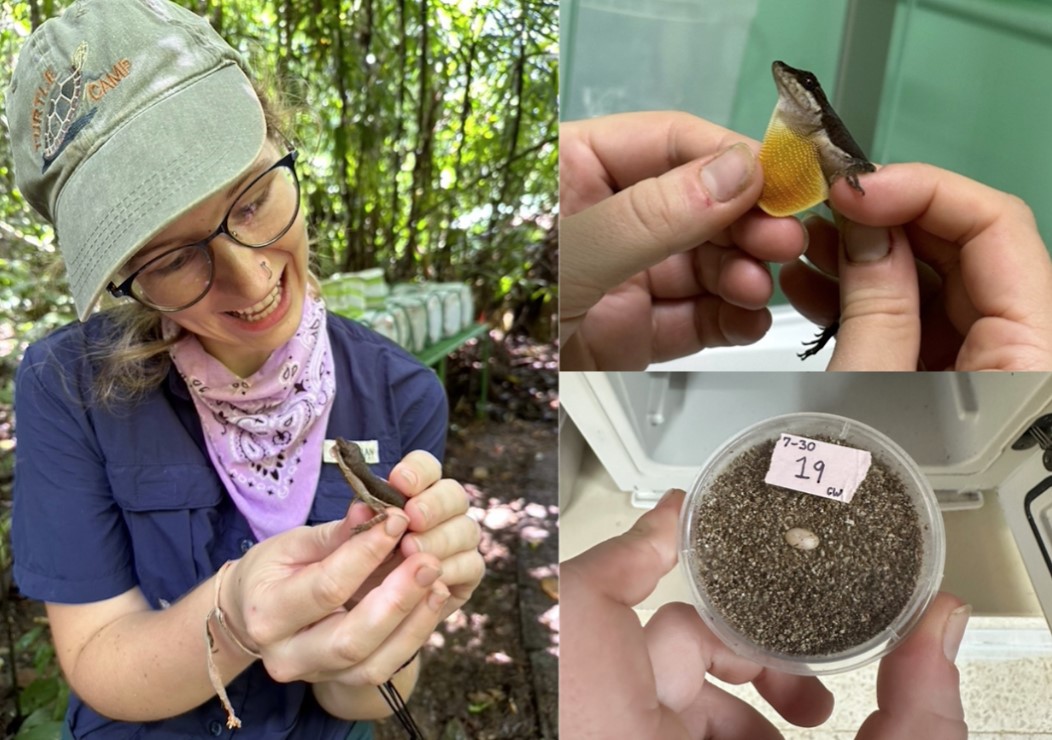Lewis and Clark Field Report: Lizard Development in Costa Rica
Header Image: The anole breeding colony at La Selva Biological Station. Each screened butterfly cage contains anole lizards with sticks, leaves, and rocks that mimic their natural environment.
My research seeks to understand how organisms evolve to deal with changing environments. Our genes may be hard-wired into us, but the ways that environments influence our genes are not. For example, lizards who develop in cooler temperatures as eggs may have higher cold tolerance later in life. In biology, we call this developmental plasticity – the early-life environments organisms live in can modify how genes are expressed, affecting their traits. Conditions during development can have lasting effects that help organisms survive in a variety of environments.
Investigating how plasticity evolves can tell us a lot about how organisms might respond to changing climates. For ectotherms (who rely on the environment to maintain their temperature), most studies are on species from temperate ecosystems. Yet, the highest density of species diversity on Earth is in the tropics, where seasonal variation is much different– rather than changing temperatures marking the seasons, the tropics are typically characterized by wet seasons and dry seasons. Studying tropical organisms can reveal how species persist under a higher influence of seasonal moisture on survival.
I am currently at La Selva Biological Station in Costa Rica studying how developmental plasticity evolves in anoles, a group of charming, small-bodied lizards known for colorful skin flaps under their chins called dewlaps. I am studying plasticity in multiple species of anoles here to determine whether all anoles in one place respond to the same environmental pressures, or if shared ancestry or differential habitat use can cause their patterns of plasticity to change. Comparative studies like these are some of our most powerful tools to understand how our biodiversity has evolved.

I spent my first few weeks here catching lizards to house in outdoor enclosures so I can collect their eggs. When I find eggs, I incubate them at different temperatures and soil moistures to determine how embryos respond to conditions that mimic seasonal changes. If my hypotheses are supported, there will be no consistent changes in traits because of temperature (since temperatures are less seasonal here). On the other hand, I expect to see consistent changes based on soil moisture, since moistures are predictably seasonal. After the babies hatch and I take some measurements, I release them where their parents were caught. Anoles, like many tropical reptiles, have seen declines in recent decades, so it is important to plan experiments that minimize the impact on natural populations.
The experiment is ongoing – after the lizards provide enough eggs, I will release them where I caught them and wait to measure the eggs that will hatch later in the fall. I am thrilled to be conducting this experiment as I write my dissertation in the most beautiful ecosystem on the planet. For now, the coffee is flowing, as are my ideas for future questions to explore as a tropical biologist. I am so grateful to the American Philosophical Society Lewis and Clark Fund, the Organization for Tropical Studies, and the Auburn University Museum of Natural History for their support in making this project possible!

